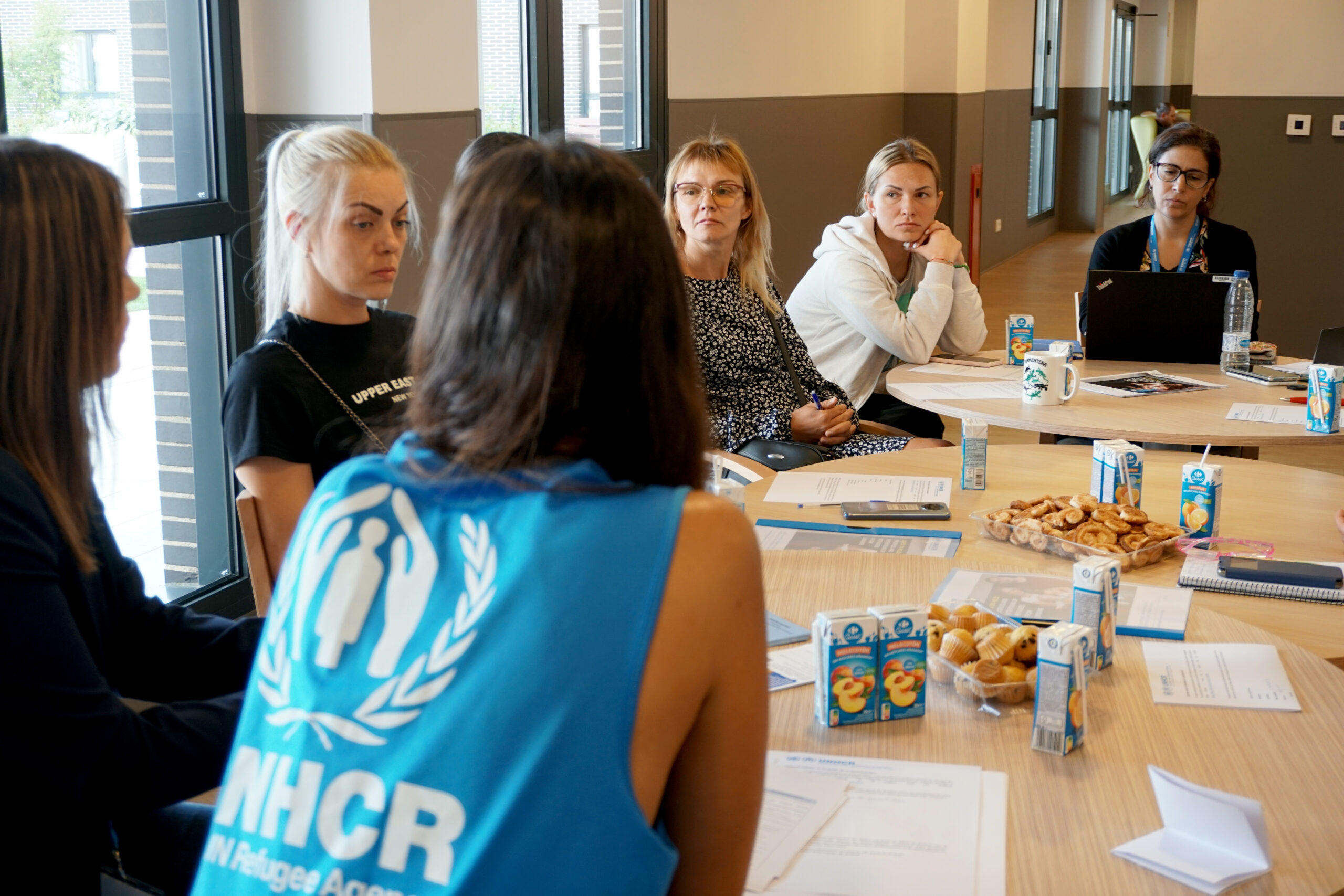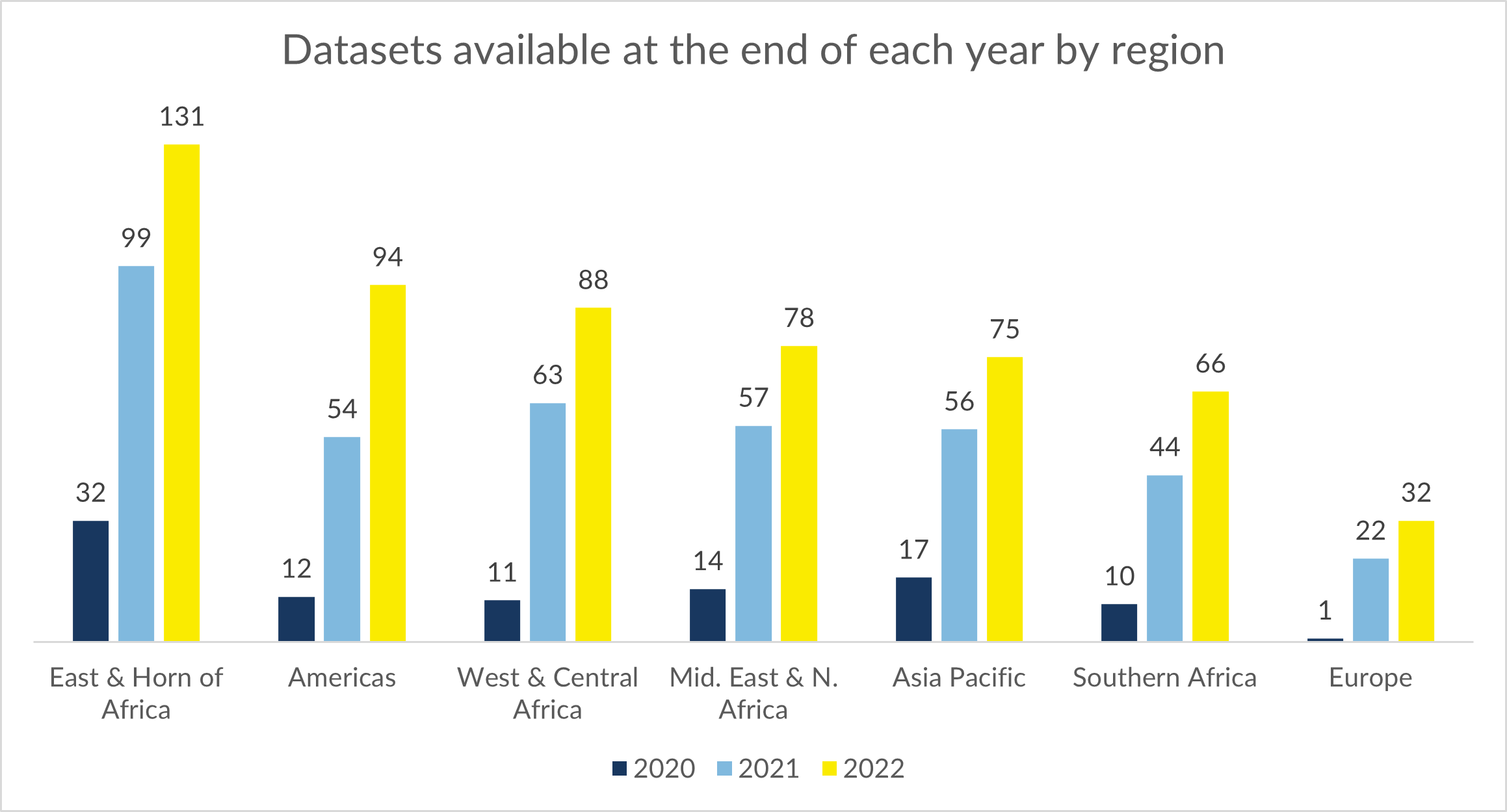
Data in humanitarian action can provide accurate and up-to-date information on the location, size, demographics and needs of populations affected by crises. This information is used to develop and implement targeted interventions, such as the provision of water, sanitation, shelter, and other critical emergency assistance to those who need it most.
Ensuring this data is curated and publicly available is the objective of UNHCR’s Microdata Library (MDL). It currently contains over 550 datasets on forcibly displaced and stateless persons and their host communities. The secure online data repository provides access to anonymous microdata – freely, safely, and timely.
The impact of the war in Ukraine
The war in Ukraine has put particular emphasis on the relevance of data and its timely dissemination. As the largest and fastest displacement situation since World War II, both international and local organizations established numerous initiatives to collect data on profiles of refugees and internally displaced population, as well as their needs and intentions of movement. Being able to securely share this information is crucial to coordination efforts in humanitarian responses.
Responding to the refugee crisis unfolding in Ukraine and neighboring countries, UNHCR and its partners collected core protection monitoring data, such as the demographic information of those leaving Ukraine, available documents when traveling, legal status in host countries, reasons for family separation, and intentions to stay and return in host countries. The objective was to verify and analyze information to identify human rights violations and protection risks encountered by those forcibly displaced. A collection on protection monitoring on countries bordering Ukraine is available on the Microdata Library for six countries, while multi-sector needs assessments are available for Poland, Slovakia, and Hungary. A regional study on intentions and perspectives comprising data from 13 countries is also available for licensed access.
Almost 600 datasets available for use covering all UNHCR regions

Figure 1: Number of datasets available by region by year
Since its creation in 2019, the Microdata Library has grown to now contain 564 datasets publicly available for licensed and open access (see Figure 1 for a breakdown by region). In 2022, several series of studies were updated in the Microdata Library, including seven new movement intentions surveys, six UNHCR/WFP joint assessments, and six socio-economic assessments.
The number of countries for which data is available increased from 84 to 93, covering all UNHCR regions. UNHCR’s Data Curation team, which is behind the Microdata Library, received almost 1500 licensed data requests to download data. During last year alone, users downloaded metadata, reports, and questionnaires over 700,000 times. Datasets available were used in at least 64 published academic articles or pieces of research.[1]
Data curation trainings
A keystone for the MDL’s work in 2022 was expanding the knowledge base around anonymization, disclosure risk and the curation work conducted in UNHCR. The Curation team worked intensely with country and regional offices to inform colleagues about risks, benefits, and best practices on sharing anonymous data – specialized trainings were held for colleagues in the Asia and the Pacific Bureau, East and the Horn of Africa and the Great Lakes Bureau, Europe Bureau, and Southern Africa Bureau. In 2022, two Global Data Literacy Series webinars open for both internal and external audiences were dedicated to microdata curation:(1) an overview of Responsible Microdata Access and (2) disclosure risk scenario building.
International collaboration
These efforts were accompanied by an ongoing work to reach out to wider audiences and increase ties with other organizations that host microdata. The Data Curation team strengthened collaborations between the MDL and the UNHCR/WFP Joint Programme Excellence and Targeting Hub to approach access to microdata in a harmonized manner; alongside the continuous work with the Humanitarian Data Exchange (HDX) and the World Bank to facilitate the discovery of data on forcibly displaced people.
What does 2023 hold for UNHCR’s Microdata Library?
2023 will see many new datasets being made available on the Microdata Library to continuously ensure that quality and coherent data related to refugees, asylum seekers, internally displaced and stateless people is shared openly and responsibly. An upcoming internal Administrative Instruction on Curation of Personal Microdata of Persons of Concern to UNHCR will strengthen this work, by establishing mandatory compliance with roles, standards, and procedures for managing, curating, and publishing data. The outcomes of the MDL are the result of continuous collaboration between data providers, technical sectors, Data, Identity Management and Analysis colleagues, country offices and external partners, which we look forward to continuing in 2023.
The UNHCR Microdata Library and curation team since inception until end-2022 were supported and funded by the World Bank-UNHCR Joint Data Center for Forced Displacement. Visit UNHCR’s Microdata Library and stay in touch by subscribing to our newsletter.
[1] This figure is based on publications that were discovered on a public website and used the suggested citation in the MDL metadata. It is likely an underestimate.
